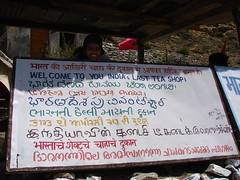I am not directionally challenged nor am I terrible at public transit. I don’t remember ever getting onto a wrong bus only to find out that I was going the wrong way, and getting off in a strange place and panicking.
I recently read about a Thai lady who was lost for 25 years after catching the wrong bus home. The last time Jaeyaena Beuraheng saw her seven children was in 1982, when she left her home in south Thailand on one of her shopping trips across the border to Malaysia.
She took the wrong bus to Bangkok, about 1,150 km north of her home in Narathiwat province. In Bangkok, unable to read Thai (she only knew a dialect, Yawi), she took a wrong bus again, this time to Chiang Mai, another 700 km further north. Her family waited for her, but in vain. The police later told her family that she was killed in a traffic accident.
She ended up as a beggar for five years, until she was sent to a homeless shelter in the central Thai province of Phitsanulok. But no one could understand what she spoke until three students, from Narathiwat, arrived on an exchange program.
She sang a song for the visitors – a song that the staff at the shelter had often heard and did not understand. The visiting students talked to her and helped her to relocate her family. Her shocked family sent her youngest son and eldest daughter to meet her and bring her back home.
Looking Bengaluru, talking Chennai: When we got into our KPN travels bus at Kodaikanal, the only worry that crossed our minds was that whether we would be reaching Bangalore on time. We showed our ticket to the ticket collector and he, in turn, showed us to our sleeper seats at the back of the bus. The bus started its descent from Kodaikanal and was already giving me a little scrambled up feeling in my head, our last seats adding more motion to the up, down, side to side, round and round, forward, and backward movements.
Within an hour the bus had reached somewhere in the plains and had stopped for fuel. Suddenly, the boy who had collected our tickets came and told us that we had boarded the wrong bus and that this bus was going to Chennai. He apologised for not checking the names on the tickets and we blamed our travel stars for not asking him before boarding. In fact, I always ask the driver as to when the bus reaches Silk Board, our usual deboarding stop in Bangalore. They came to know that we were the wrong passengers when they received a call from the two passengers who were to travel to Chennai and had missed the bus. They had hired a cab to catch the bus on its the way.
We told them to drop us at a point from where we could catch the Bangalore bus. Then we came to know that the Chennai and Bangalore routes are entirely different – the Bangalore buses take the Palani route and the Chennai buses take the Dindigul one. The bus driver was helpful and he made a call to the main office. Fortunately, there was a bus coming from Theni going to Bangalore which we could board from Batlagundu, if seats were available.
We were dropped at Batlagundu, a tiny town at the foothills of Kodaikanal. We were tired and weary and everything about Batlagundu seemed to be more chaotic and less clean. To make things worse it started to rain and my head was still reeling from all that roller-coaster ride. The KPN office looked more like a warehouse, they were sharing their office with an electrical repair shop, and the person sitting in the office was far more from helpful. He kept saying there were no seats available and the rest of the conversation was lost in translation. Finally, when the bus arrived, the driver’s seat was available (that too a sleeper). We thanked our travel stars (this time) and promised ourselves that this will never happen again, making a mental note to always confirm the destination of the bus/train/plane before boarding.
Interesting story? We could have ended up on a Monday morning on a Chennai street, confused, hungry and fumbling with the phone in a dilemma on to whether to call the angry boss or the shocked cousin. Or even worse, we could well have been trying to eke out a living selling groundnuts in Batlagundu!!!





































